Rose White bear
Plants with snow-white flowers are a symbol of purity, sincerity and peace of mind. This is especially true for roses obtained thanks to the labor and skill of breeders. A striking example is the magnificent Polar Bear variety.

History of appearance
The culture that our story will be about was created by Russian breeders. However, no one owns more specific information about who exactly bred this rose variety and in what year it happened, not even nurseries selling the beautiful plant. Experts only clarify that our heroine is a domestic variety with a long history. In catalogs, she is often listed under the name White bear.
Description of appearance and features
Our heroine is a powerful bush up to 100 cm high, with straight, strong, even shoots, whose outfit consists of a large number of dark green, shiny leaves. The buds appearing on the shoots are large, with a classic goblet shape. At the stage of complete dissolution, the flowers of the noble plant are densely double, ash-white. In girth, they reach 14-16 cm and emit a pleasant, rich aroma. The petals that make up the flower have a yellow base. The middle of the inflorescences is a light cream shade. The polar bear is the largest garden white rose known today. Perennial belongs to the multi-flowering varieties. Flowers stay on the bush for a long time and are formed on the stems in the amount of 1-3 pieces.
The features of this delightful plant include good winter hardiness, high resistance to fungal diseases and rain. However, without shelter, the culture, as a rule, dies, so this should not be neglected. During abundant flowering, the shrub may fall apart a little, so take care of the support for the decorative perennial.
Growing and care
White bear is recommended to be planted in that part of the garden where there is a lot of sunlight throughout the day - but not direct, but mostly diffused. Exposure to too bright sun can provoke the appearance of burns on delicate flower petals, and growing a rose in the shade will deprive you of the opportunity to observe its lush bloom.

The soil of the polar bear must be fertile, well-drained, loose, with a slightly acidic pH. On nutrient-poor soil, the culture does not develop well. The bush hole should be more than half a meter deep. Then the roots of the Russian beauty will be able to freely settle in this depression. The first layer in the planting hole is high-quality drainage - gravel, fine crushed stone; the second is a soil mixture, which is prepared from leafy, sod land, peat, humus and sand. After the seedling is lowered into the hole and covered with the remaining soil, be sure to pour the plant with water at room temperature.
Variety care includes the following procedures.
- Moistening the soil. It is carried out regularly, as the upper soil layer dries up. Do not allow the soil under the flower to dry out. In the summer, when the heat is on, this event is held once a week, in the spring - once every couple of weeks.
- Top dressing. The plant needs nutrients throughout the growing season. In the spring, nitrogen fertilizers are applied under the crop, when buds and flowers appear on the rose bush, mineral complexes are used. In the fall, the polar bear needs phosphorus-potassium supplementation.
- Loosening and mulching of the soil. These procedures are an excellent measure for preventing the appearance of weeds in the zone of the near-trunk circle. In addition, with the help of mulching, it is really possible to reduce the number of waterings, since it is produced to retain moisture in the soil under the flower. Peat and humus are suitable for the role of mulch.
- Pruning. White bear is exposed to it in spring and autumn, and summer if necessary. Pruning a tea hybrid is mainly of a sanitary nature: damaged, diseased, dead, old shoots are subject to removal. In the summertime, faded inflorescences should be removed in time.
Before covering the plant for the winter, all its stems are shortened, leaving no more than 10 cm from their main length. After that, the perennial is spud with dry earth and covered with fallen leaves or insulated with spruce branches. Of the pests, the variety can infect spider mites, leaf rollers, and aphids. At the first sign of their appearance, the rose should be treated with an insecticidal solution. Several sprays per season for prevention purposes will not hurt either. The same must be done to reduce the risk of developing diseases on the shrub using fungicides.
Use cases
The polar bear can become the main figure of your flower garden. It is appropriate to place it in the rose garden. An adorable plant with gorgeous flowers will decorate any flower bed. Decorative flowering perennial is often used to decorate mixborders and low hedges. It is also planted on the sides of the garden paths. The combination of this tea hybrid and conifers is incredibly effective. In addition, the Russian beauty looks harmoniously surrounded by fragrant herbs and ornamental cereals. Excellent neighbors for a plant in group plantings will be roses of other varieties with blood or dark red flowers. Snow-white fragrant White bear inflorescences can be cut and put in a vase - such a bouquet will not lose its attractiveness for a long time.
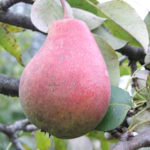
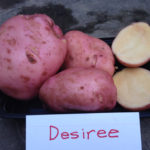
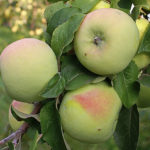
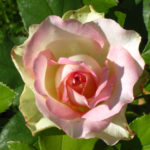
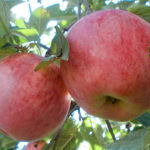




The rose is very beautiful - just gorgeous in bouquets! I could not pass by this variety - the huge snow-white buds were very impressed, but as soon as I began to grow a rose on my site, I was very disappointed in it. First, the flowers quickly lose their attractiveness - the bud does not have time to open to the end, and the ends of the petals are already darkening, curling, dark spots appear on the surface. Secondly, the rose winters disgustingly - I think it can only be grown in warm climates. Thirdly, beetles eat light buds in the very first place - it is not yet possible to fight them.
Good afternoon Daria. I am interested in your opinion on the choice of the variety. thank